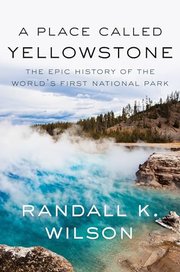Yellowstone, writes Gettysburg College environmental studies professor Wilson, “is remarkably distant from just about everywhere and everyone else in the continental United States.” For all that, it draws 4 million visitors a year. It was always remote, little settled by Indigenous people until relatively recently. Early on, an American explorer with a background in geology, a junior Army officer named Gustavus Cheyney Doane, recognized that Yellowstone was a vast caldera formed by ancient volcanic action; by Wilson’s reckoning, the “largest recorded eruption in human history,” that of Indonesia’s Mount Tambora, blasted out just 6% of the volcanic debris that Yellowstone’s last eruption did—and, as catastrophists are fond of pointing out, Yellowstone is long overdue for another. Wilson’s early explorers made for a hardy breed, though strange: The Sioux who encountered one geologist at work must have thought he was crazy for carrying a backpack full of stones, and they left him alone for it—adds Wilson, “In human cultures across the world, mental illness (real or imagined) is often cause for compassion rather than hostility.” Although cattle ranchers and miners resisted the effort, Yellowstone finally became a national park, helped along in the end, Wilson reckons, by a strain of 19th-century Romanticism that held that nature “offered humans a path to moral and spiritual well-being and deserved respect for its own sake.” Surprisingly, magnate John D. Rockefeller, as Wilson shows, was highly instrumental in protecting the park. Bedeviling park naturalists then and now was how to balance human visitation with protection for wild animals, who today include restored populations of wolves, grizzly bears, bison, and other creatures.
Categories
A PLACE CALLED YELLOWSTONE
